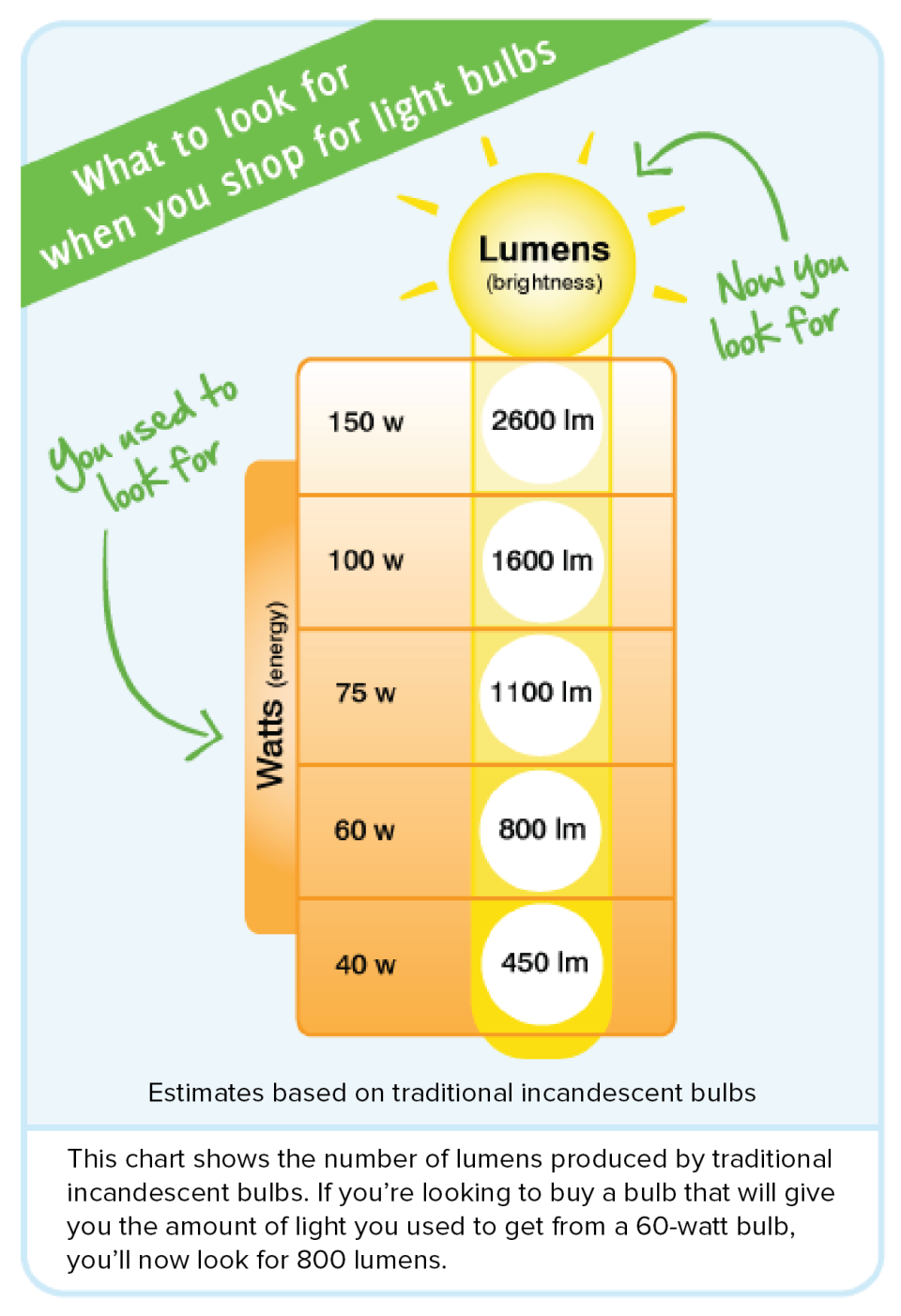What Are Lumens?
Today’s light bulbs are designed to use less energy, so wattage isn’t a reliable way to gauge a light bulb’s brightness. Lumens measure brightness: more lumens means brighter, while fewer lumens means dimmer.
- lumens = brightness
- watts = energy
For example, a traditional 60-watt incandescent bulb produces about 800 lumens of light. By comparison, you can find an LED (light-emitting diode) bulb that produces that same 800 lumens but uses only about 9 watts.
How Bright Is the Light?
This graphic shows the number of lumens produced by traditional incandescent bulbs. If you’re looking to buy a bulb with the amount of light you used to get from a 60-watt bulb, for example, you’ll now look for 800 lumens.
Once you know how bright a bulb you want, compare factors like the yearly energy cost, which is on the Lighting Facts label.
What Is the Lighting Facts Label?
The Lighting Facts label is on light bulb packages. It gives you information to compare different bulbs, including
- brightness (in lumens)
- yearly estimated energy cost
- expected bulb life (in years)
- light appearance (how warm or cool the light will look)
- wattage (the energy used)
- if the bulb contains mercury
For many shoppers, the light appearance, or color temperature, of the bulb matters a lot. The Lighting Facts label will tell you where that bulb falls on the warm (more yellow) to cool (more blue) range.
The label might include the Energy Star logo if the bulb meets the energy efficiency and performance standards of the Environmental Protection Agency and the Department of Energy’s ENERGY STAR program. For more on ENERGY STAR standards, visit energystar.gov.
What’s on the Bulb?
The number of lumens is printed on the bulb. If the bulb is a CFL (compact fluorescent), it might be on the bulb’s base. CFLs also include a web address, epa.gov/cfl, for information on safe recycling and disposal. Since CFLs contain mercury, it’s important to clean up and dispose of CFLs if they break.
Where To Learn More
Learn more about shopping for light bulbs at energy.gov.

